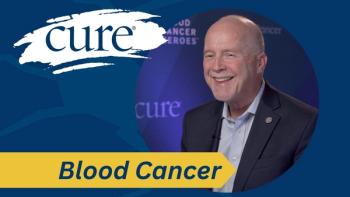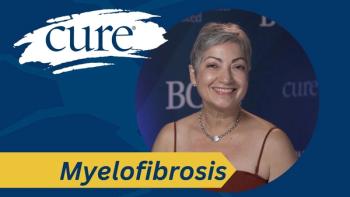
ESMO 2020: Phase 3 CheckMate 649 Trial
The Educated Patient®: Research Updates provides current clinical updates for different disease states. The following information is for educational purposes and is not medical advice.
FOR YOUR REFERENCE: What Are Clinical Trials?
Clinical trials determine whether a drug works in humans and if it is safe and effective. To find out whether a drug can be approved for use, the Food and Drug Administration (FDA) requires four phases of a clinical trial. The number of participants increases in each phase, starting from 20 to
80 people for a phase 1 trial to up to 3,000 for a phase 3 trial (Figure 1).1
- Phase 1: tests an experimental treatment on a small group of often healthy people to judge its safety and side effects and find the correct dosage.
- Phase 2: focuses on effectiveness and obtains preliminary data on whether the drug works in people who have a certain disease or condition.
- Phase 3: gathers more information about safety and effectiveness, studies different populations and dosages and examines use of the drug in combination with other drugs.
- Phase 4: occurs after FDA approval; monitors safety and effectiveness in large, diverse populations; and collects information on long-term side effects.
FOR YOUR REFERENCE: What Is Gastric Cancer?
Gastric cancer, also called stomach cancer, begins when cells in the stomach start to grow out of control. The stomach is a saclike organ that’s an important part of the digestive system. Gastric cancer typically starts in the inner lining of the stomach. From there, it can grow through the wall of the stomach and into nearby organs, as well as possibly spread to nearby lymph nodes. As the cancer becomes more advanced, it can travel through the bloodstream or lymph system and spread (metastasize) to organs such as the liver, lungs and bones, which can make it harder to treat.2,3
For stomach cancers that have not spread beyond the stomach and nearby lymph nodes (stages 1-2), surgery to remove the cancer, often with chemotherapy before or after surgery, offers the best chance for long-term survival. For stage 1 or 2 cancers that cannot be removed, or resected, by surgery, options include chemotherapy alone or chemotherapy plus radiation and chemotherapy plus immunotherapy and/or targeted therapy (for HER2-positive cancers).3,4
If the cancer has shrunk enough with this treatment, subtotal gastrectomy (removal of part of the stomach) or total gastrectomy (removal of the entire stomach) might be an option. Nearby lymph nodes (and possibly parts of nearby organs) are removed as well.3
For cancer that is unresectable after initial treatment or has spread to distant parts of the body (stages 3-4) options include:
- Chemotherapy alone or plus immunotherapy and/or targeted therapy (for HER2-positive cancers) or chemotherapy plus radiation.
- Endoluminal laser therapy or endoluminal stent placement to relieve a blockage in the stomach, or gastrojejunostomy to bypass the blockage.
Radiation or surgery to stop bleeding, relieve pain or shrink a tumor that is blocking the stomach. - Radiation or surgery to stop bleeding, relieve pain or shrink a tumor that is blocking the stomach.
- Clinical trials of:
- New combinations of chemotherapy to relieve symptoms.
- Targeted therapy with a multikinase inhibitor.
- Surgery and hyperthermic intraperitoneal chemotherapy.
FOR YOUR REFERENCE: What Medications Were Investigated in the CheckMate 649 Trial
Opdivo (nivolumab) is a type of targeted immunotherapy known as an immune checkpoint inhibitor. In a normal immune system, T-cell proteins will sometimes bind with proteins on tumor cells, which deactivates the T cells and prevents them from killing off the cancer cells. Immune checkpoint inhibitors interfere with the binding of these proteins.5 Specifically, Opdivo blocks a protein called programmed death 1 (PD-1) from binding with the proteins programmed death-ligand 1 (PD-L1) and PD-L2. This enables PD-1 to unleash the body’s T cells against the cancer cells.6
ESMO 2020: Phase 3 CheckMate 649 Trial
This randomized global phase 3 study enrolled 1,581 patients with previously untreated HER2-negative unresectable (unable to be surgically removed) advanced or metastatic gastric cancer (representing 70% of patients), gastroesophageal junction cancer or esophageal adenocarcinoma. Sixty percent of the patients had tumors expressing a PD-L1 combined positive score (CPS) of at least 5.7 The CPS is a measure of the number of PD-L1-positive cells compared with the total number of tumor cells found.8
Patients were split into three groups: Opdivo plus chemotherapy, Opdivo plus Yervoy (ipilimumab) and a chemotherapy alone group. Patients in the Opdivo plus chemotherapy group received Opdivo plus chemotherapy in the form of XELOX (capecitabine plus oxaliplatin) or FOLFOX (fluorouracil, leucovorin, oxaliplatin). Patients in the chemotherapy-alone group followed the same chemotherapy regimens. Patients in the Opdivo plus Yervoy group were not included in this analysis.9
The primary end points of the study were overall survival (OS) and progression-free survival (PFS), tabulated by a blinded independent review team, in patients with PD-L1 CPS of 5 or higher.9
Results
The Opdivo plus chemotherapy group saw an OS benefit. The median OS of patients with PD-L1 CPS of 5 or higher in this group was 14.4 months compared with 11.1 months in the chemotherapy alone group (Figure 2).9,10 The median OS of all randomized subjects was
13.8 months in the Opdivo plus chemotherapy group versus 11.6 months in the chemotherapy group.9,10
The difference in PFS, too, was notable. In the Opdivo plus chemotherapy group, patients with tumors with a PD-L1 CPS of 5 or higher had a median of 7.7 months of PFS compared with 6.1 months in the chemotherapy group. The median PFS of all randomized subjects was 7.7 months in the Opdivo plus chemotherapy group versus 6.1 months in the chemotherapy group.9
Patients in both groups experienced manageable side effects, with no new toxicities or unexpected treatment-related side effects (Figure 3).9,10 Treatment-related side effects of any severity occurred in 95% of patients with a PD-L1 CPS of at least 5 who were treated with Opdivo and chemotherapy, whereas 88% of subjects with a PD-L1 CPS of at least 5 who received just chemotherapy experienced the same. The Opdivo group saw a 59% incidence of grade 3 or 4 (severe or life-threatening) treatment-related side effects compared with 44% of the chemotherapy group. No grade 5 events occurred in any patient.9,10
In the Opdivo plus chemotherapy group, 38% of patients ended up stopping their treatment regimen because of side effects. One-quarter of the chemotherapy group did the same. The Opdivo plus chemotherapy group also had eight deaths from treatment-related toxicity compared with four such deaths in the chemotherapy group.10
The results of the study were presented at the European Society for Medical Oncology Virtual Congress 2020. The fact that subjects with a PD-L1 CPS of 5 or more were able to reach a median 14-month survival duration is a noteworthy development, according to oncologists, as OS of one year in this group had been a milestone not yet achieved.7
Based on the results of this study and others, the authors expressed confidence that Opdivo plus chemotherapy would become a key first-line regimen for patients living with advanced gastric cancer, gastroesophageal junction cancer or esophageal adenocarcinoma.8
Not all patients qualify for certain clinical trials. If you are interested in enrolling in a trial, talk with your doctor about which treatment options would be most appropriate for you.
Not all patients qualify for certain clinical trials. If you are interested in enrolling in a trial, talk with your doctor about which treatment options would be most appropriate for you.
FOR YOUR REFERENCE: Glossary of Terms
Chemotherapy: treatment that uses drugs to stop the growth of cancer cells either by killing the cells or by stopping them from dividing. These drugs are taken by mouth or injected and enter the bloodstream so they can help fight cancers that spread throughout the body. This can affect cancer cells and normal cells.
Combined positive score (CPS): measure of the number of PD-L1-positive cells compared with the total number of tumor cells found
Endoluminal laser therapy: treatment that uses intense, narrow beams of light to cut and destroy tissue, such as cancer tissue in the area inside a tube, duct or hollow organ in the body
End points: the outcomes being measured by a clinical trial
ESMO: European Society for Medical Oncology
First-line therapy: the first treatment given for a disease
Gastrectomy: surgical removal of a part or the whole stomach
Gastrojejunostomy: surgery to remove the part of the stomach with cancer that is blocking the opening into the small intestine
HER2-positive: cells that have a protein called HER2 on their surface. In normal cells, HER2 helps control cell growth. Cancer cells that make too much HER2 may grow more quickly and are more likely to spread to other parts of the body.
Hyperthermic intraperitoneal chemotherapy: a treatment used during surgery that is being studied for gastric cancer. After the surgeon has removed as much tumor tissue as possible, warmed chemotherapy is sent directly into the peritoneal cavity.
Immune checkpoint inhibitor: a type of drug that blocks proteins called checkpoints that are made by some types of immune system cells, such as T cells, and some cancer cells. When these checkpoints are blocked, T cells can kill cancer cells better.
Immunotherapy: a type of therapy that uses substances to stimulate or suppress the immune system to help the body fight cancer, infection and other diseases. Some types of immunotherapy only target certain cells of the immune system; others affect the immune system in a general way.
Lymph nodes: part of the lymphatic system in the body’s immune system; carry fluid containing white blood cells, which help fight infections
Metastasize: when the cancer travels from the original tumor and spreads to other parts of the body such as tissues or organs
Multikinase inhibitor: small molecule drugs that go through the cell membrane and work inside cancer cells to block multiple protein signals that cancer cells need to grow and divide
Overall survival: the length of time from either the date of diagnosis or the start of treatment for a disease that a patient is still alive
Programmed death 1: a protein on the surface of T cells that helps keep the body’s immune responses in check
Programmed death-ligand 1: a protein found on some types of cancer cells
Progression-free survival: the length of time during and after the treatment of a disease that a patient lives with the disease, but it does not get worse, or the patient does not die
Radiation: type of cancer treatment that uses beams of intense energy to kill cancer cells
Safety profile: the chemistry, pharmacology, therapeutic effects and side effects of an administered drug or other substance
Side effect: any unfavorable or unintended disease, sign or symptom that occurs during the time a patient is receiving a medical treatment or procedure
Stent: a device placed in a body structure (such as a blood vessel or the gastrointestinal tract) to keep the structure open
T cell: a type of white blood cell; part of the immune system developed from stem cells in the bone marrow. T cells help protect the body from infection and may help fight cancer.
Targeted therapy: a cancer treatment that uses drugs to target specific aspects of the cancer cells
Toxicity: the extent to which something is poisonous or harmful. Toxicities may be related to the clinical trial agent and may be life-threatening.
Unresectable: not removable with surgery
References
- What are clinical trials and studies? National Institute on Aging. Accessed March 15, 2021. https://www.nia.nih.gov/health/what-are-clinical-trials-and-studies
- What is stomach cancer? American Cancer Society. Updated May 7, 2021. Accessed May 14, 2021. https://www.cancer.org/cancer/stomach-cancer/about/what-is-stomach-cancer.html
- Treatment choices based on the extent of stomach cancer. American Cancer Society. Updated January 22, 2021. Accessed May 14, 2021. https://www.cancer.org/cancer/stomach-cancer/treating/by-stage.html
- Stages of gastric cancer. National Cancer Institute. Updated May 8, 2021. Accessed May 14, 2021. https://www.cancer.gov/types/stomach/patient/stomach-treatment-pdq#_50
- Immune checkpoint inhibitors. National Cancer Institute. Updated September 24, 2019. Accessed May 10, 2021. https://www.cancer.gov/about-cancer/treatment/types/immunotherapy/checkpoint-inhibitors
- Guo L, Zhang H, Chen B. Nivolumab as programmed death-1 (PD-1) inhibitor for targeted immunotherapy in tumor. J Cancer. 2017;8(3):410-416. doi:10.7150/jca.17144
- Helwick C. Nivolumab plus chemotherapy: new standard of care in advanced gastric cancer? ASCO Post. October 10, 2020. Accessed May 14, 2021. https://ascopost.com/issues/october-10-2020/nivolumab-plus-chemotherapy-new-standard-of-care-in-advanced-gastric-cancer/
- Kulangara K, Hanks DA, Waldroup S, et al. Development of the combined positive score (CPS) for the evaluation of PD-L1 in solid tumors with the immunohistochemistry assay PD-L1 IHC 22C3 pharmDx. J Clin Oncol. 2017;3(15). doi:10.1200/JCO.2017.35.15_suppl.e14589
- Moehler M, Shitara K, Garrido M, et al. LBA6_PR-Nivolumab (nivo) plus chemotherapy (chemo) versus chemo as first-line (1L) treatment for advanced gastric cancer/gastroesophageal junction cancer (GC/GEJC)/esophageal adenocarcinoma (EAC): first results of the CheckMate 649 study. Ann Oncol. 2020;31(4):S1191. doi:10.1016/j.annonc.2020.08.2296
- Hergert J. Phase 3 CheckMate-649 study sees promising survival benefit with frontline nivolumab, chemo combo. Cancer Network™. September 22, 2020. Accessed May 11, 2021. https://www.cancernetwork.com/view/phase-3-checkmate-649-study-sees-promising-survival-benefit-with-frontline-nivolumab-chemo-combo





